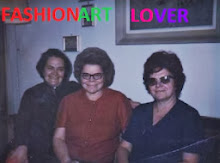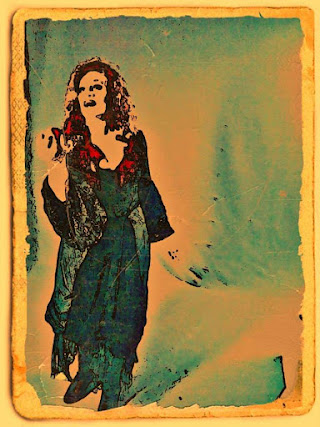Thomas "Tom" Ford (born August
27, 1961 ) is an American fashion designer
and film director. He gained international fame for his turnaround of Gucci and
the creation of the Tom Ford label before directing the Oscar-nominated film A
Single Man.
Tom Ford was born August 27, 1961 , in Austin , Texas Houston , Texas San Marcos Austin Santa Fe , New Mexico Santa Fe Santa Fe Preparatory
School Santa Fe Bard College New York City New York University
Ford dropped out of NYU after only a year, preferring to concentrate on
acting in television commercials; at one time, he was in 12 national
advertising campaigns simultaneously. Ford then began studying interior
architecture at The New School's famous art and design college, Parsons The New
School for Design. During his time in New York New School Paris
When interviewing for jobs after graduation, he said that he had
attended The New School's Parsons division, but concealed that he graduated in
architecture, and that his work at Chloe
was a low-level public relations position. Despite his lack of experience, Ford
called American designer Cathy Hardwick every day for a month in hopes of
securing a job at her mid-price sportswear company. Eventually, she agreed to
see him. Hardwick later recalled the incident: "I had every intention of
giving him no hope. I asked him who his favorite European designers were. He
said, 'Armani and Chanel.' Months later I asked him why he said that, and he
said, 'Because you were wearing something Armani'. Is it any wonder he got the
job?" Ford worked as a design assistant for Hardwick for two years. In 1988,
Ford moved to Perry Ellis, where he knew
both Robert McDonald, the company's president, and Marc Jacobs, its designer,
socially. He stayed at the company for two years, but grew tired of working in
American fashion. In a later interview with the New York Times, he commented,
"If I was ever going to become a good designer, I had to leave America. My
own culture was inhibiting me. Too much style in America is tacky. It's looked
down upon to be too stylish. Europeans, however, appreciate style." Ford
would soon have the opportunity to enter the world of European fashion; Gucci,
a faltering luxury goods company, was seeking to strengthen its women's
ready-to-wear presence as a part of its brand overhaul. At the time, "no
one would dream of wearing Gucci," said Dawn Mello, then the company's
creative director. Mello hired Ford—then a near-unknown—as the brand's chief
women's ready-to-wear designer in 1990. "I was talking to a lot of people, and
most didn't want the job," Mello said. "For an American designer to
move to Italy to join a company that was far from being a brand would have been
pretty risky." Ford and his longtime partner, fashion journalist Richard
Buckley, relocated to Milan that September.
Ford's role at Gucci rapidly expanded; he was designing menswear within
six months, and shoes soon after that. When Richard Lambertson left as design
director in 1992, Ford took over his position, heading the brand's
ready-to-wear, fragrances, image, advertising, and store design. In 1993, when
he was in charge of designing eleven product lines, Ford worked eighteen-hour
days. During these years, there were creative tensions between Ford and
Maurizio Gucci, the company's chairman and 50% owner. According to Mello,
"Maurizio always wanted everything to be round and brown, and Tom wanted
to make it square and black." Though Maurizio Gucci wanted to fire Ford,
Domenico de Sole insisted that he remain. Nonetheless, Ford's work during the
early 1990s was primarily behind the scenes; his contributions to Gucci were
overshadowed by those of Mello, who was the company's public face.
In 1994, Ford was promoted to creative director. In his first year at
the helm, he was credited with putting the glamour back into fashion
introducing Halston-style velvet hipsters, skinny satin shirts and car-finish
metallic patent boots. In 1995, he brought in French stylist Carine Roitfeld
and photographer Mario Testino to create a series of new, modern ad campaigns
for the company. Between 1995 and 1996, sales at Gucci increased by 90%. On the
strength of Ford's collections, Gucci went public in October 1995 with an IPO
of $22 per share, followed by an additional global offering in March 1996 at
$48 per share and a third offering in 1999 at $75 per share. In early 1999,
luxury goods conglomerate LVMH, headed by Bernard Arnault, increased its
shareholdings in Gucci with a view to takeover. Domenico de Sole reacted by
issuing new shares of stock in an effort to dilute the value of Arnault's
holdings. Ford and De Sole also approached French holding company
Pinault-Printemps-Redoute (PPR) about the possibility of forming a strategic
alliance. François Pinault, the company’s founder, agreed to the idea and purchased
37 million shares in the company, or a 40% stake. Arnault’s share was diluted
to 20%. At one point, Ford was the largest individual shareholder of Gucci
stock and options.
By 1999, the house, which had been almost bankrupt when Ford joined, was
valued at about $4.3 billion. When Ford left in 2004, Gucci Group was valued at
$10 billion.
When Gucci acquired the house of Yves Saint Laurent (YSL), Ford was
named the creative director of that label as well, displacing Saint Laurent
himself as designer of the company's ready-to-wear line. Saint Laurent did not
hide his displeasure with this development, openly and regularly criticizing
Ford's collections. "The poor man does what he can," he is quoted as
once saying of his successor. During his time as Creative Director for YSL,
Ford nonetheless won numerous Council of Fashion Designers of America Awards.
Like his work at Gucci, Ford was able to catapult the classic fashion house
back into the mainstream. His advertising campaigns for the YSL fragrances
Opium (with a red-haired Sophie Dahl completely naked wearing only a necklace
and stiletto heels in a sexually suggestive pose) and YSL M7 (with martial arts
champion Samuel de Cubber in complete full-frontal nudity) have been famous and
provocative by pushing fragrance ads to a new level of creativity in artistic
expression and commercial impact.
In April 2004, Ford parted ways with the Gucci group after he and CEO
Domenico de Sole, who is credited as Ford's partner in Gucci's success, failed
to agree with PPR bosses over artistic control of the Group. He has since
referred to this experience as "devastating" because he had "put
everything into that for fifteen years."
After leaving Gucci, Ford launched a line of menswear, beauty, eyewear,
and accessories in 2006. Dominico De Sole became chairman of the Tom Ford label.
In March 2011, Ford was featured on the
cover of the bi-annual publication AnOther Man, the fraternal counterpart to
Another Magazine, giving his opinion on what makes the modern day gentleman.
In March 2005, Ford announced the opening of his film production
company, FADE TO BLACK. In 2009, Ford made his film directorial debut with A
Single Man, which was based on the novel
of the same name by Christopher Isherwood. The film stars Colin Firth, Julianne
Moore, Nicholas Hoult and Matthew Goode. The screenplay was adapted by Ford and
David Scearce. Ford also produced the film, which premiered on September 11,
2009, at the 66th Venice International Film Festival and was nominated for a
Golden Lion. Colin Firth, who plays the protagonist George, was awarded the
Volpi Cup as Best Actor for his performance and was also nominated for an
Academy Award, Golden Globe, Independent Spirit Award and Screen Actors Guild
Award. He won the BAFTA Award for Best Actor in a Leading Role. Julianne Moore
was nominated for Best Supporting Actress and Abel Korzeniowski for Best
Original Score at the Golden Globes. Tom Ford was nominated for two Independent
Spirit Awards in 2009, including Best First Feature and Best First Screenplay.
Ford, along with David Scearce, also received a nomination for Best Adapted
Screenplay at the Broadcast Film Critics Association Awards.
Ford is married to Richard Buckley, a journalist and former editor in chief
of Vogue Hommes International; they have been in a relationship since their meeting
in 1986. The couple have a son, Alexander John Buckley Ford, born in September
2012. The family lives in Italy, where Ford moved from New York in 1990. Ford
and Buckley have owned smooth fox terriers, which have appeared on the runway
and in photos with Ford and in his film A Single Man.

























































0 σχόλια:
Δημοσίευση σχολίου